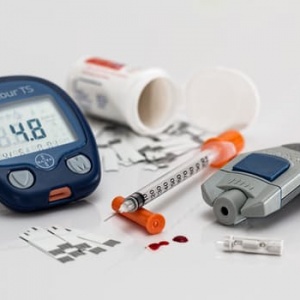Sometime over the past 30+ years, many in the medical and fitness world came to a difficult and exasperating conclusion: weight loss is not so simple as eat less, move more.
For the past 50 years or so the estimated calculus of 3,500 calories = a pound of fat – that is, eat fewer calories than you need per day and over time that will result in a pound of weight loss, or eat more calories per day than you need and that will add a pound of fat to your body over time. Similarly, burn off 3500 calories more than you consume over time and you’d lose a pound of fat. We’ve since learned that an old concept minimized the effectiveness of that simple math.
That concept, popularized by a former Vanderbilt psychology professor, Dr. Martin Katahn, was the ‘set point’ theory. This posited that our bodies’ weight was regulated, like a thermostat, to remain close to where it had settled in. At the time he was doing his research, which I proudly confess to having minimally assisted while in grad school, he nor health science had little idea as to why it was that this set point worked. Basically, though, it said that as our body acclimated to its ‘new’ size and shape, it resisted changes brought about by dietary or activity adjustments.
This resistance to change is referred to as homeostasis: “any self-regulating process by which biological systems tend to maintain stability while adjusting to conditions that are optimal for survival.”

Today, we now know that there are gut and brain hormones that react and respond to how much and even what we’ve eaten by sending signals to stop eating, eat more, or eat differently. The primary hormones – ghrelin, leptin, GLP-1, PYY, insulin, and others – provide our neurogastric – nerves and stomach – feedback system with information as to whether we’re hungry, should be hungry, or should be sated.
For example, the commonest of these is insulin, a hormone secreted from the pancreas that helps to push sugars and proteins into the cells. When you put a plate of food in front of you, insulin goes up. If the food is high in carbohydrates, which will elevate blood sugar, it will pump out more insulin to clear the blood of excessive sugar. Too much sugar in the blood endangers small nerves of the eyes, feet, etc., and can lead to blindness and peripheral neuropathy, two consequences of what we know of as type 2 diabetes. It can also damage small blood vessels leading to kidney, liver, heart, and even brain damage.
What we didn’t know years ago was that too much insulin in the body actually led to what’s referred to as insulin resistance, where the cells’ receptors, which act as keyholes that used to accept insulin’s keys, are now clogged up. So now the cells are less apt to take in the sugars and proteins from the blood, allowing the latter to float around and cause damage elsewhere.
This is the case with many of the gut and brain hormones.
When leptin levels rise, telling the body you’ve gotten enough calories and can stop eating, an obese person is less sensitive to those signals and is apt to keep eating. Similar resistances occur with other appetite and hunger hormones: the longer one has maintained a body with excess fat, the less sensitive one becomes to signals that try to regulate food intake.
It is this biochemistry that calls for attention to a more recent perspective of how we view overweight-ness and obesity: it’s a disease, not a moral or motivational failing on the part of the person. This philosophical approach is similar to how the healthcare community is changing concerning other diseases. For example, it is no longer appropriate to refer to someone with diabetes as diabetic any more than we should refer to someone with cancer as cancerous.
The disease is not the person any more than the person is the disease.
Essentially, once one has gained excessive amounts of weight, the many hormones involved in appetite (desire to eat), hunger (need to eat), sense of satiety, etc. become unfriendly to the idea and process of cutting calories. As Jason Fung, M.D., wrote in his book, The Obesity Code, “as we develop insulin resistance, our bodies increase our insulin levels to get the same result – glucose in the cell. However, we pay the price in constantly elevated insulin levels.” He calls this process “diabesity.”
Taken too far in other aspects of life, this shift might appear to be political correctness. But, in medicine, this shift allows doctors to treat the disease independently of the person…without losing sight of the person suffering from the disease. This paradigm shift is crucial to understanding the introduction of some of the new weight loss medications.
Along came semaglutide, a man-made drug; it is a GLP-1 agonist and helps boost insulin output. This was initially found to help those with type 2 diabetes. Like many drugs, however, it had a remarkable set of side effects: less hunger (slows the emptying of food from the stomach making you feel fuller longer), less food-thoughts (decreases obsessions with eating), less addiction to other substances (like alcohol, tobacco, even gambling and sex in some cases), and decreased weight. By a lot! And faster than you could accomplish with diet and/or exercise.
These medications have been demonstrated to prevent cardiac events in obese people, help obese children safely lose weight, and might even have a role in Covid prevention.
Sold under various names that have become synonymous with weight loss, such as Wegovy, Rybelsus, and Ozempic, this fantastic drug is new enough for weight management yet we don’t even know certain basic things about it. For example, how long does one have to take it? What are the long-range negative effects of taking it? And is it safe or dangerous for those with comorbidities related to or unrelated to obesity?
One controversy with these drugs is whether they are being appropriately prescribed and/or marketed. That is, they are being touted as useful for weight loss to those who may or may not have obesity but don’t, yet, have signs or symptoms of comorbid diseases. In other words, should people who simply want to drop some weight be allowed or encouraged to take them, especially if the profit margins for prescribing, selling, and following up are high enough that purveyors are potentially putting users at risk?
The obvious medico-ethical and medico-legal answer to the above is an emphatic ‘NO’. But that won’t stop some purveyors of these kinds of drugs from fulfilling clients’ and/or patients’ requests. Nor will it stop many of those who are, for good reasons or wrong reasons, desirous to lose body weight even if not medically warranted.
In other words, in the context of body image distortions prevalent in US and many other Western societies, are semaglutide drugs feeding into the emotional and cultural insecurities of their users?
There are so many questions about this powerful and effective set of medications that cannot be entertained in the context of this newsletter. There are so many of which might lend themselves to pontificating, opinionating, or, worse, adjudicating their value and risks that it would be wrong for me to attempt at my level of understanding. Suffice it say, they are not to be taken lightly. One should consult with one’s physician and even one’s pharmacist before doing so. And stay tuned for future newsletters.
Semaglutide & childhood obesity
Ozempic and its contemporaries
Semaglutide & heart event risk reduction
















